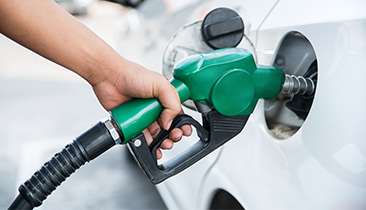Drivers urged to prepare their cars for winter
With winter on its way, Motor Codes, the government-approved consumer watchdog for the automotive industry, is urging motorists to ‘winter-proof’ their cars. Its online winter driving tips will help drivers to ensure their vehicles are prepared for winter driving conditions, and help avoid expensive repairs.
Bill Fennell, Managing Director, Motor Codes, said, “There is no time like the present to ensure that antifreeze is topped up, tyres and brakes are working well and your windscreen is clear.
“Drivers needn’t wait for an official Met Office warning. If they follow our winter driving tips, their cars will be winter-ready – and this will make journeys safer for them, their passengers and other road users. Whatever the forecast for winter, drivers need be able to rely on their cars and make them as safe as possible.”
Here are Motor Codes’ top 10 tips to winter-proofing your car:
- Top up antifreeze
It’s an obvious tip, but you’d be amazed by the number of people who fail to maintain the right level of antifreeze in their vehicle. Without adequate antifreeze, sub-zero temperatures can do untold damage to your engine. Your manual will tell you the best type of antifreeze for your car and the amount you should use. Safety first! Never replenish fluids (oil, coolant, wiper fluid) straight after you’ve driven the car – wait until it’s cooled down. - Make sure your windscreen is clear
In the winter, spray, grit and slush can obscure the view through your windscreen and compromise your safety. Your windscreen wipers and washer fluid are the only defence against this. So make sure the wipers are working smoothly and don’t leave streaks, and that the washer fluid is always topped up.
Keep a supply of washer fluid, ideally mixed with de-icer, in the boot. Don’t be tempted to replenish the fluid compartment with water and washing-up liquid – you’ll end up with a fogged-up windscreen. Other road-users need to be able to see you, so check that all your driving lights (including foglights) are working properly and wipe them clean once a week. - Keep your battery charged
Your car battery works harder during the winter months: the heating’s on full-blast, de-misters are working overtime and, because of the shorter daylight hours, headlights are on for longer. As if that’s not enough, cold temperatures also reduce the battery’s capacity. It’s important you know the health of your battery – the last thing you want is to be met by silence the next time you try to turn on the engine. - Check your tyres
Balding tyres are a safety hazard at any time, but in winter the risks of an accident are even greater. So make sure that all four tyres have the safe amount of tread. Legally, the depth of the tread must be at least 1.6mm but, for peace of mind, 2-3mm is recommended. You may even want to invest in a set of winter tyres, particularly if you live in a rural or hilly area. - Test your brakes
The roads are wetter and more slippery in winter than at any other time of the year, so it’s vital that your brakes are up to the task. Some newer cars are fitted with sensors that will tell you when the brakes need replacing. Otherwise, you can ask your local garage to test your brake pads, discs and pipes. - Protect your car body
Nothing ages your car body quicker than exposure to the grit and salt sprinkled on the roads in the winter. Prevention is definitely better than cure when it comes to keeping corrosion at bay, so wash and wax your car before the harsh weather sets in. If you have to park outside during the winter months, consider buying a good quality car cover. - Replace belts and hoses
Cold temperatures can weaken the rubber belts and hoses under your car’s bonnet, and you don’t want something to snap out on the road on a cold winter’s night. Although in most cases they get checked at service time every 30,000 miles or so, it’s always a good idea to let a mechanic give them a once-over before the first cold snap arrives, as there may be potential weak points susceptible to the cold weather. - Don’t run the tank empty
In sub-zero temperatures, your fuel-line may freeze up meaning that your car won’t start. You can prevent this simply by making sure your fuel tank is always more than half-full. - Keep an emergency kit
Keep an emergency kit in your car in case you break down and find yourself stuck out in the cold. Your kit should include boots, blankets, torch and batteries, first aid kit, jump leads, shovel, road atlas, de-icer and sunglasses (winter sun can be dazzling). - Get a timely service
You can address many of these winter-proofing tips in one go by paying a visit to your local garage. Many now offer special winter checks, including ensuring tyres are in good condition, mechanical parts are lubricated and essential lubricants topped up. Remember that keeping up-to-date with the recommended service schedule will help keep your car in good condition all year round – and protect any warranty.
If you’re in doubt about whether your car is winter-ready, check out Motor Codes’ handy infographic guide at www.motorcodes.co.uk/wintertips. You can also use the site’s garage finder to search for a local garage to help give you peace of mind: www.motorcodes.co.uk/garagefinder/







